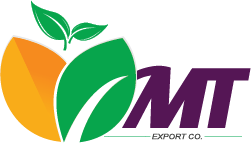When consuming products, we have many options to choose from: fresh, frozen, canned, freeze-dried, pureed, liquefied, dried, and more. You may be right to think that some types of products are better than others based on the amount they are processed; Many nutrients are intact with less processing and less nutrients when the fruit is extremely processed. However, there has been a long debate about the suitability of fresh and frozen produce.
Fresh vegetables and fruits are the healthiest foods we should eat.
They are full of vitamins, minerals and antioxidants – all of which help improve health.
Eating lots of green vegetables and fruits can also help fight heart disease.
Fresh produce is not always available, and frozen varieties seem to be a more convenient alternative.
However, their nutritional value may differ.
This article is to compare the nutritional value of fresh and frozen vegetables.
Harvest, process and transport
Most vegetables we buy are harvested by hand, a few are harvested by machines.
However, there is a difference between fresh and frozen produce after that.
Fresh fruits and vegetables
Most fruits and vegetables are harvested before ripening. This allows them time to ripen during transport.
This also gives them less time to develop enough natural vitamins, minerals and antioxidants.
In the US, fruits and vegetables can be harvested and stored somewhere from 3 days to a few weeks before they reach the distribution center.
However, the USDA states that some products, such as apples and pears, can be kept for 12 months under controlled conditions before being marketed.
During transport, fresh products are often stored in refrigerated conditions and controlled by chemicals to avoid damage.
When you arrive at the supermarket, it can take another 1-3 days for display. They will then be kept indoors for 7 days before eating.
Summary: Fresh vegetables are usually harvested before they are fully ripe. Transportation and storage can take anywhere from 3 days to 12 months for some types of product.
Frozen fruits and vegetables
Fruits and vegetables used to keep frozen are often chosen when they are ripe, when they have the most nutrients.
After harvesting, vegetables are usually washed, preliminarily processed, cut, frozen and packed within hours.
Fruits should not be blanched, as this may affect their texture.
Instead, they can be treated with ascorbic acid (a form of vitamin C) or added sugar to avoid damage.
Normally no chemicals are added before freezing.
Summary: Frozen vegetables are usually harvested when ripe. They are usually washed, blanched, frozen and packed within hours of harvest.
Frozen products may contain more vitamin C
rozen products may contain higher levels of nutrients.
This is often seen in studies comparing frozen produce with several types of fresh produce that have been stored for several days at home.
For example, frozen peas or spinach may have more vitamin C than supermarket bought peas or spinach that has been left at home for a few days.
For some fruits, dry chilling makes the vitamin C content higher when compared to some other fresh fruits.
In addition, a study found that the freezing process of fresh produce may increase the amount of fiber by making it more soluble.
Fresh fruits and vegetables straight from the farm or home garden are of the highest quality.
However, if you shop at a supermarket, frozen produce is worth the same, or in some cases, may have a higher nutrient content than fresh produce.
Finally, frozen vegetables are convenient and cost-effective compared to fresh foods.
The best way is to choose a combination of fresh and frozen foods to ensure that you get the best nutritional content for the product.
Conclusion
There are many factors to consider when choosing your product. Most importantly, you must consume all these nutritious foods;
So any form that helps you maximize your fruits and vegetables will be the best option for you.


 Tiếng Việt
Tiếng Việt